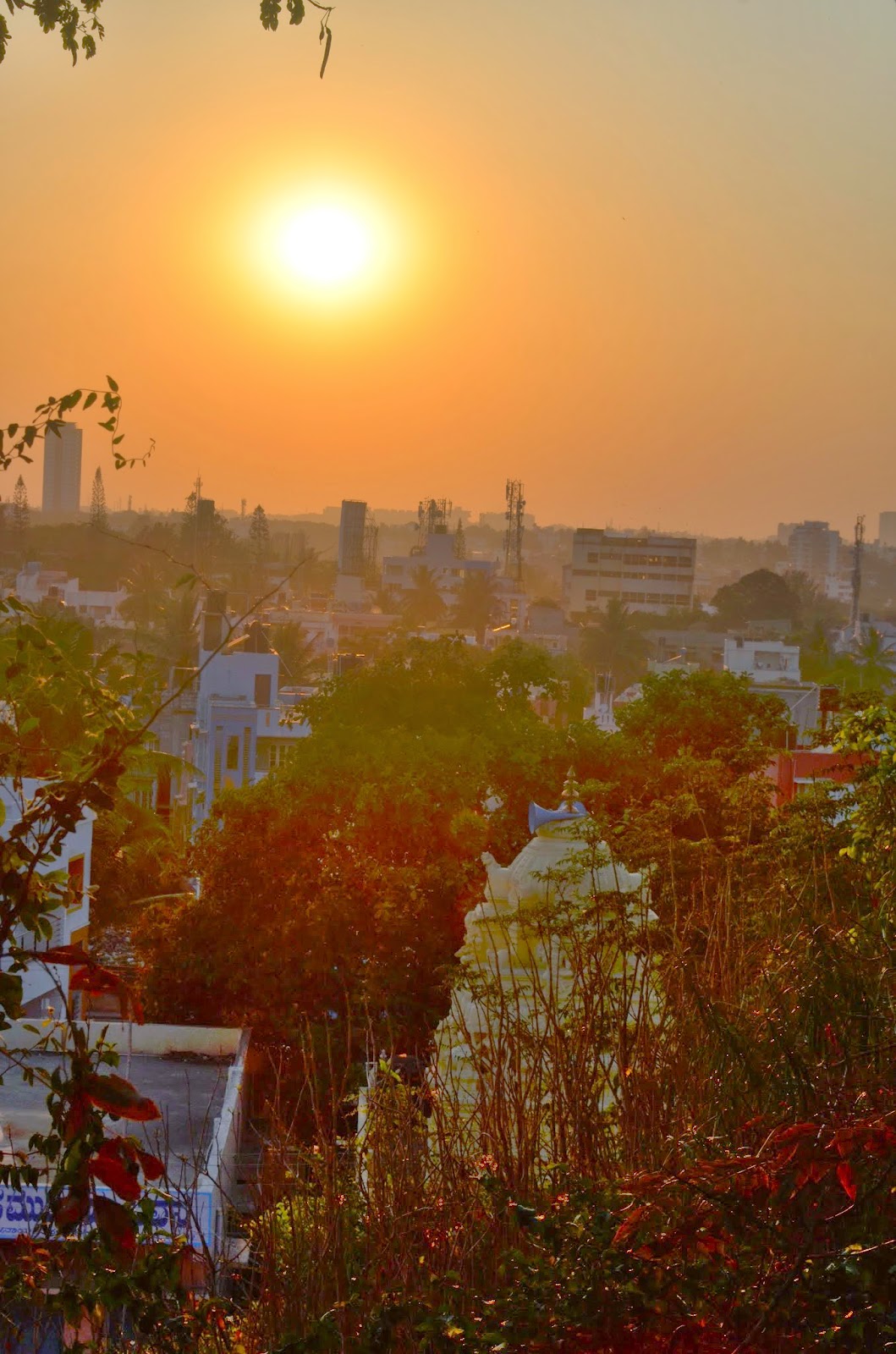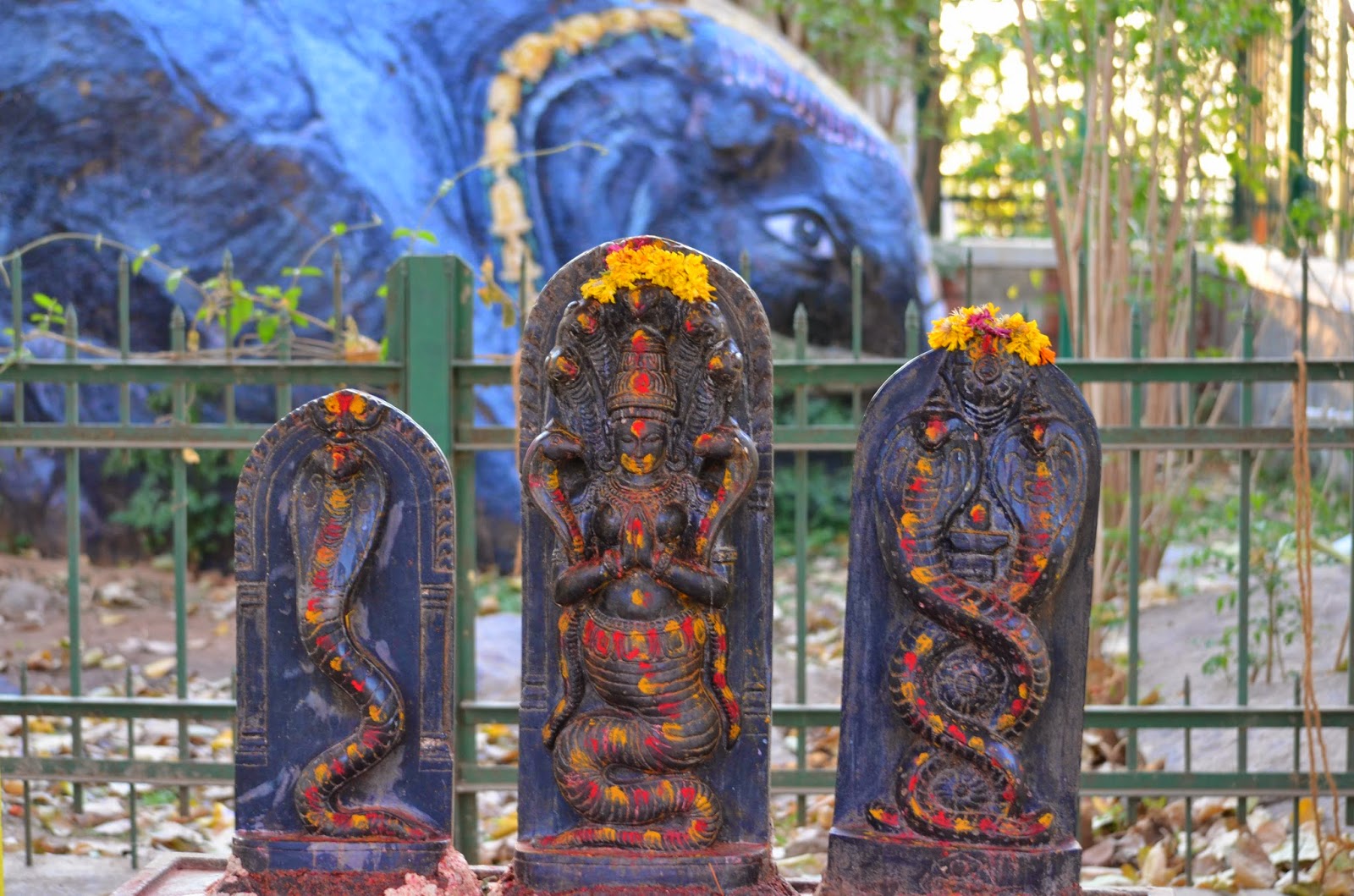Having visited the Anandalingeshwara Temple in Hebbal and having my curiosity aroused about Chola temples in Bangalore, I came across a couple of Internet articles regarding an ancient Chola temple in the heart of the city - Domlur, no less. When the opportunity arose to visit that part of town, I resolved to pay a visit to the temple as well. Inspite of the many precautions I had taken to refer to directions listed on the Net, I still had to ask my way around the area before I got to my destination. Chokkanatha is a name that is used in reference to Shiva, not Vishnu. Very few people, even those from that area, knew about an ancient Vishnu temple there. And the area abounds in temples - I counted 6 in my wanderings through two roads.
So, how do you get there ? The simplest way is to turn into a narrow lane called 5th Cross from the Old Airport Road. This would be opposite the Modern World Showroom. There is a small signboard pointing to the temple at the beginning of 5th Cross, that should indicate you are on the right path.
The signboard says "Ancient 12th Century Chola Temple" making this probably the oldest temple in Bangalore. It also mentions "Sreedevi Bhoodevi Sametha Sri Chokkanatha Swamy Temple" which means the main deity is accompanied by his consorts - Sreedevi and Bhoodevi.
The temple has a tall stone flagstaff in front. The temple itself is elevated from the road level and there are steps leading up to the first level, where there are two smaller modern shrines dedicated to Ganesha and Anjaneya, on either side. The steps are flanked by two stone pillars with interesting carvings (scenes from the Dasavataram) and carrying inscriptions in Tamil.
Inscriptions (in ancient Tamil script) on the stone walls of the temple indicate that the main deity is "Chokkaperumal". They also indicate that the idols are made of saligrama stone, which is obtained from Nepal. The location has been identified as Tommalur. According to one of the earliest inscriptions, Irvi Tripuranthaka Chettiar and his wife donated the lands for the temple and its maintenance. There are also inscriptions referring to Hoysala King Ramanandadeva of 1300 AD and his sanctioning of money for temple festivals. The sanctum sanctorum or garbhagriha and the ardha mantapa seem to be from the Chola period. The front portion or navaranga mantapa seems to be typical of the later Vijayanagar style.
A renovation of this temple was carried out during 1975-1983, and care was taken to preserve the older structures. I was able to glean all this information from a painted board inside the temple premises.
The temple is constructed such that in certain months, the early rays of the rising sun directly illuminate the deities in the sanctum sanctorum. This is something I want to see but it would mean another trip in the wee morning hours. The idols looked resplendent in the light of incandescent lamps, and should be quite a spectacle in golden sunlight.
Zoom into the pictures below to see some of the Tamil inscriptions on the stone walls.
Another interesting feature is the decade-old discovery by a retired chief executive engineer of the presence of eight pranic points in the temple. The points in the prakaram area are marked with white squares.
The temple premises are clean and well maintained. The customary Garuda idol facing the main deity, has a little mantap of its own.
Yet another interesting tale that I came across and wanted to check for myself is this : There is an Anjaneya temple just a few metres away, where the head of the Anjaneya idol is supposedly at the same level as the feet of Chokkanatha Swamy. The elevation of the Chokkanatha Swamy temple and the construction of the Anjaneya Swamy temple below road level seems to make this a distinct possibility.
It was late evening by the time I got to the Anjaneya Swamy temple. The temple was bustling with activity and hence I could not get to talk to the priest. I decided that I would be back for a more detailed exploration and left, feeling quite contented that I had visited possibly the oldest temple in Bangalore.





















